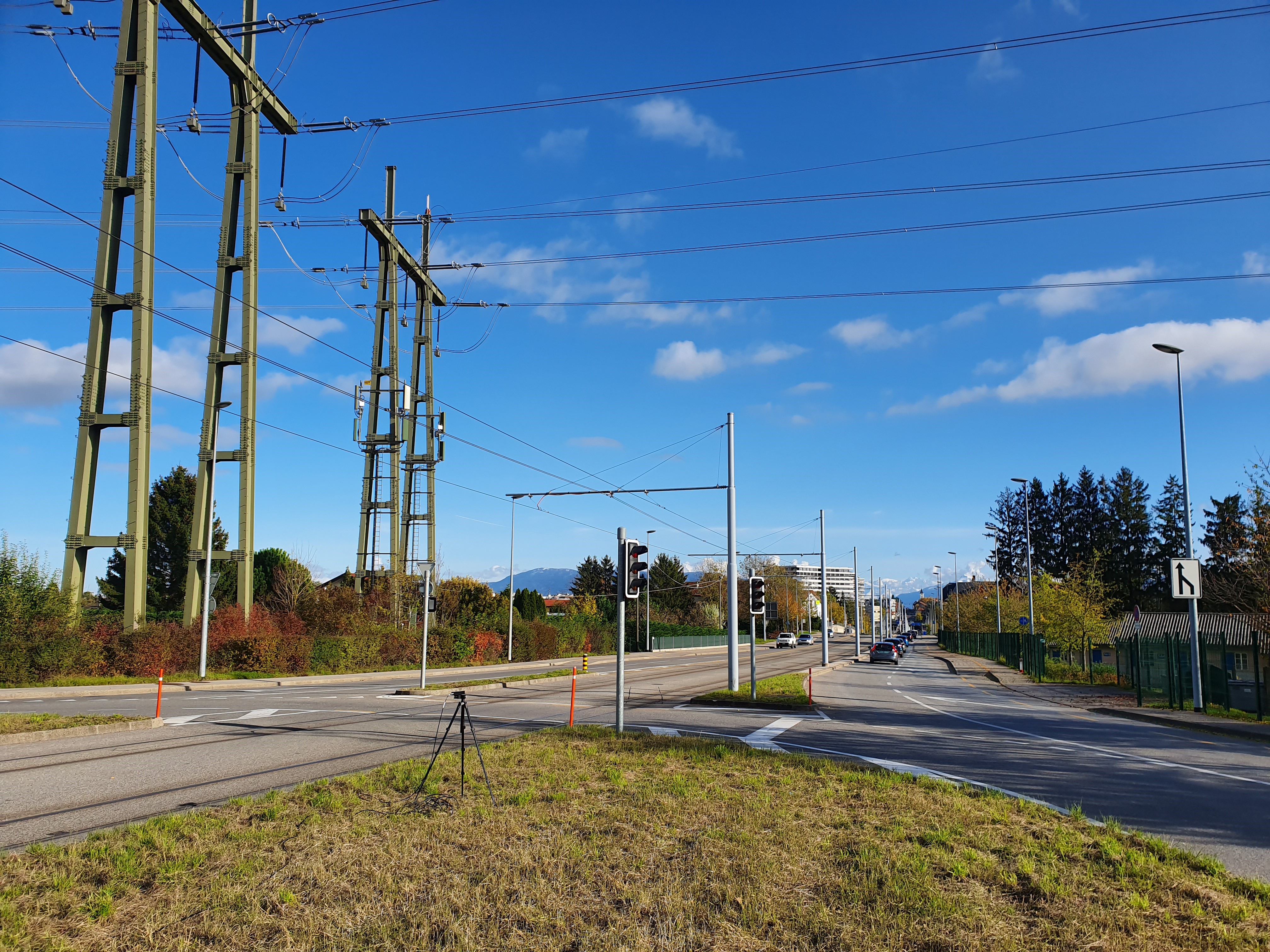The Compact Linear Collider (CLIC) targets nm beam sizes at collision. This leads to a sensitivity to sub-nT external dynamic (stray) magnetic fields, which can deflect the beams and lead to a relative offset at collision. Recently, a measurement campaign was undertaken in collaboration with a Hungarian geological institute to characterise the ambient magnetic field on the CERN site. The magnetic fields measured were several orders of magnitude greater than the sub-nT tolerance for CLIC. Therefore, a mitigation system will be essential. The proposed mitigation system for CLIC is a mu-metal magnetic shield, which can prevent the stray magnetic fields from reaching the beam.
Stray magnetic field sources in an accelerator environment include the Earth’s magnetic field, nearby electrical infrastructure, such as power lines/power stations, and accelerator elements. Efforts were made to characterise each of these sources through measurements [1]. Stray magnetic fields from the Earth’s magnetic field tend to have a slow temporal variation [2], which makes it possible to directly correct the beam under the inference of the Earth’s field. Therefore, the Earth’s magnetic field is not a dangerous source.
To characterise stray magnetic fields from the electrical grid, the ambient magnetic field on the Prevessin, CERN site (shown in Figure 1) was measured. The Prevessin site contains a sub-power station. Figure 2 shows the power spectrum of the magnetic field. There are clear peaks at harmonics of 50 Hz along with additional smaller peaks due to amplitude modulation of the 50 Hz harmonics. Such a spectrum is typical of stray magnetic fields from technical equipment powered by the European electrical grid.
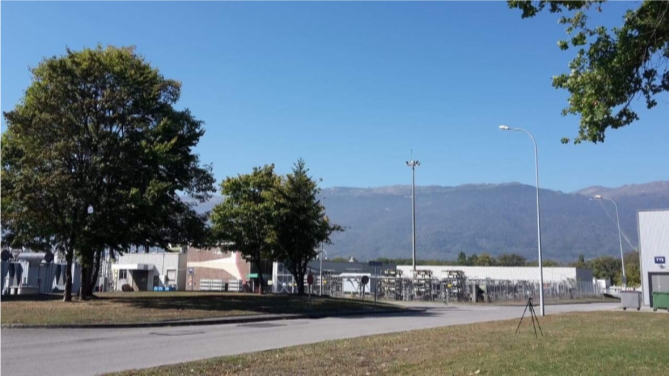

A design choice of CLIC is the repetition frequency, which was chosen to be 50 Hz to minimise the impact of stray magnetic fields from the electrical grid. By operating at this repetition frequency, each beam pulse sees the same stray magnetic field from the electrical grid, which means it appears as if it is static and its impact can be removed.
To characterise stray magnetic fields from accelerator elements, such as power cables, magnets, RF systems, ventilation systems, etc., measurements were taken in the vicinity of a live accelerator. Figure 3 shows a measurement at point 5 in the Large Hadron Collider (LHC) tunnel. Figure 4 shows the power spectrum and correlation at different locations. This measurement contains stray magnetic fields from all possible sources. Using these measurements, a model was developed which could be used to simulate the impact of stray magnetic fields in CLIC; further details can be found in [3]. These simulations show without any mitigation an LHC-like magnetic field in CLIC, would lead to a luminosity loss of 43%, which would be disastrous. With a feedback system that corrects the beam trajectory, the luminosity loss is reduced to 15%, which is still a significant degradation in performance. Therefore, a dedicated mitigation system for stray magnetic fields is required.
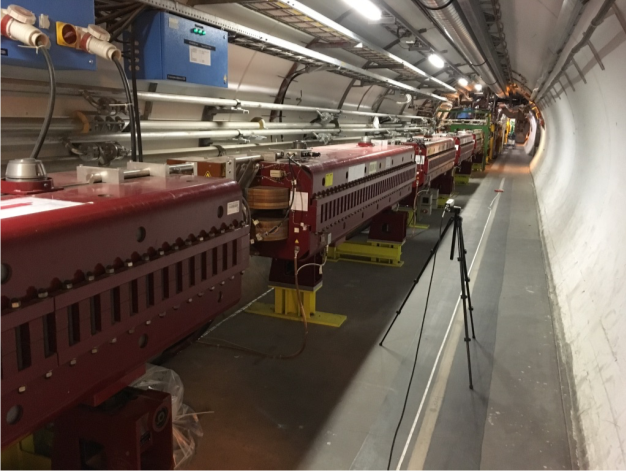
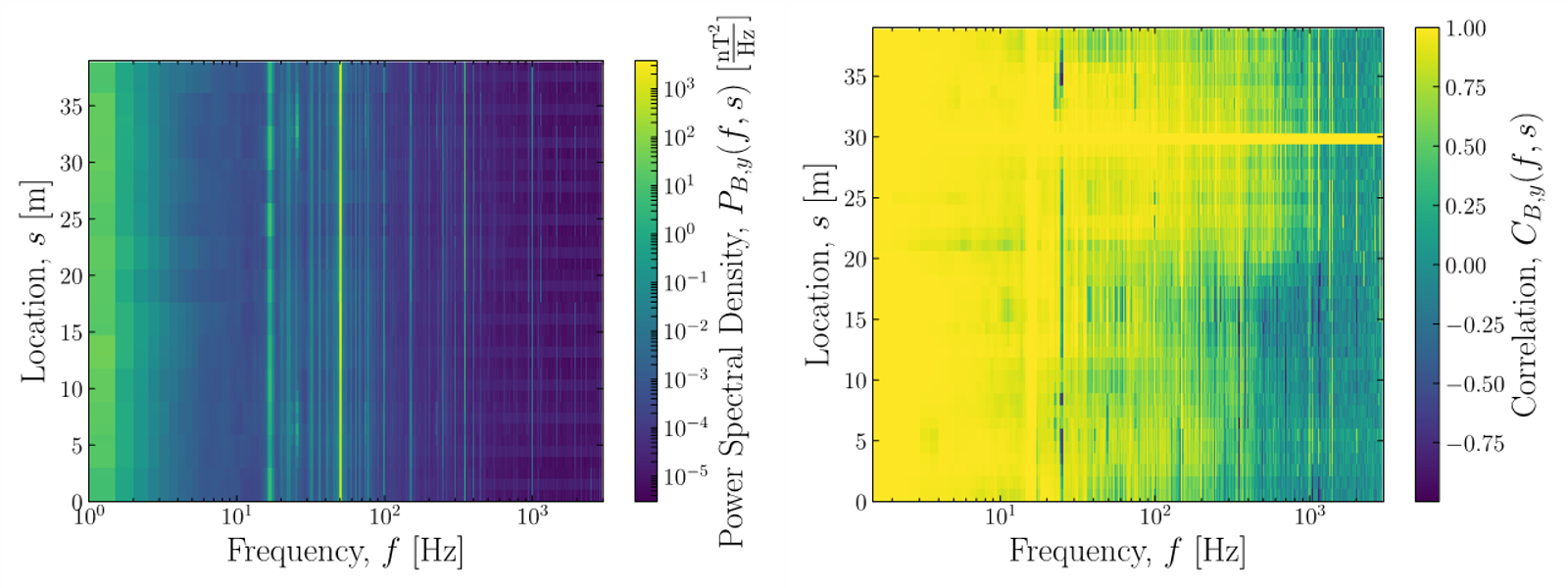
The proposed mitigation technique for CLIC is to shield the beam from stray magnetic fields. A material often used for magnetic shielding is mu-metal. The key material property that determines the shielding effectiveness is the magnetic permeability, which is a function of many factors including the external magnetic field strength. As the amplitude of the external field is decreased the permeability of a ferromagnetic material is often reduced. Dedicated measurements were taken to verify that mu-metal is an effective magnetic shield at the field levels of concern for CLIC. Figure 5 shows measurement setup, which used a set of Helmholtz coils to provide a precise magnetic field excitation. The amplitude response (one over the shielding factor) of a 1 mm mu-metal shield is shown in Figure 6. The measurement shows that the mu-metal shield has a shielding factor of above 1,000, which is sufficient for CLIC. With a mu-metal shield the luminosity loss due to stray magnetic fields that could be expected for CLIC is less than 1%. Furthermore, with a mu-metal shield an alternative high-luminosity design of CLIC operating at a repetition frequency of 100 Hz becomes feasible; see [4] for further details.

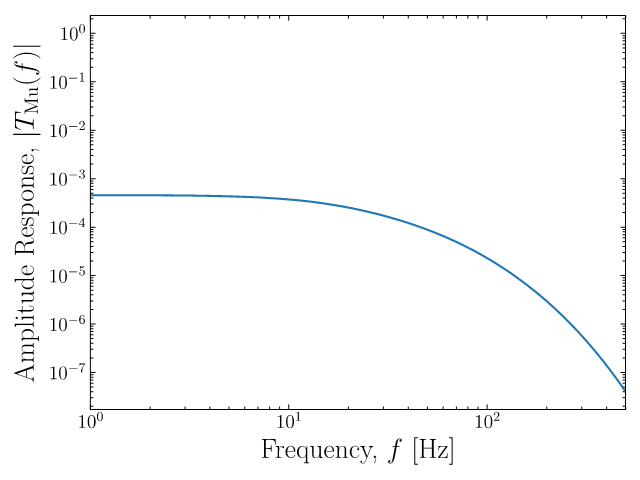
References:
[1] C. Gohil, N. Blaskovic Kraljevic, P. N. Burrows, B. Heilig, D. Schulte, ‘Measurements of Stray Magnetic Fields at CERN for CLIC’, in Proceedings of the 10th Int. Particle Accelerator Conference (IPAC’19), Melbourne, Australia, 19-24 May, 2019. https://cds.cern.ch/record/2696275.
[2] B. Heilig, C. Beggan and J. Lichtenberger, Natural sources of geomagnetic field variations, Technical Report CERN-ACC-2018-0033, 2018. https://cds.cern.ch/record/2643499.
[3] C. Gohil, ‘Dynamic Imperfections in the Compact Linear Collider’, DPhil thesis, University of Oxford, 2020. https://cds.cern.ch/record/2724824.
[4] S. Stapnes, Updates to the CLIC performance studies, https://acceleratingnews.web.cern.ch/acceleratingnews/node/153.html.

